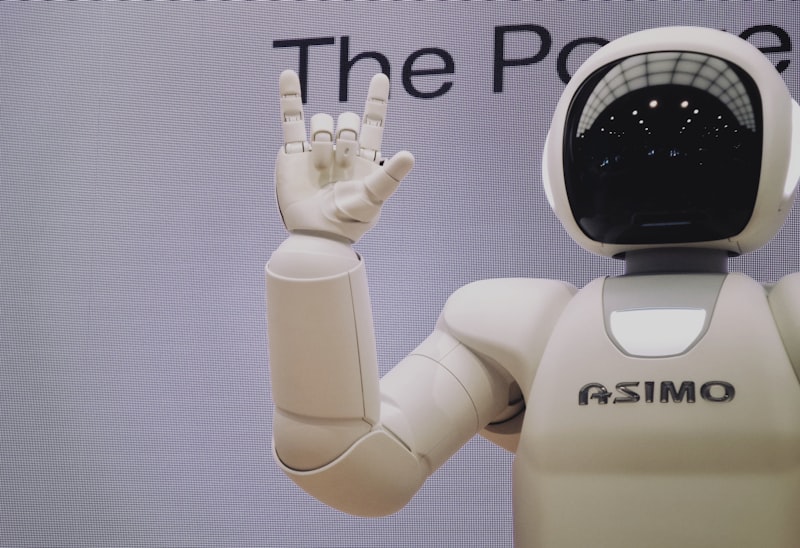Ever wondered how technology is transforming security? Artificial Intelligence (AI) is revolutionizing security solutions, making them smarter and more effective than ever before. Let’s delve into how AI is playing a pivotal role in enhancing security across various domains.
AI brings a new dimension to security by leveraging advanced algorithms that can analyze vast amounts of data in real-time. Imagine a security system that not only detects intrusions but also predicts them before they happen. That’s the power of AI at work.
One of the key areas where AI shines is in surveillance. Traditional CCTV systems have their limitations, relying heavily on human operators to spot anomalies. AI-powered cameras, on the other hand, can autonomously identify suspicious behavior, such as unauthorized access or unusual movements, and alert security personnel instantly.
Moreover, AI enhances threat detection by continuously learning from patterns and anomalies. It adapts to new threats on the fly, making security systems more robust and proactive. This capability is crucial in today’s dynamic threat landscape, where cyberattacks and physical breaches are increasingly sophisticated.
In cybersecurity, AI algorithms can sift through enormous amounts of network data to detect anomalies that may indicate a potential breach. They can analyze patterns of user behavior to identify deviations that could signal insider threats or unauthorized access attempts. This proactive approach helps organizations stay one step ahead of cyber threats.
AI’s role extends beyond detection; it also aids in response and mitigation. Automated response systems powered by AI can isolate compromised systems, contain threats, and even initiate countermeasures in real-time, all without human intervention. This capability is particularly valuable in mitigating the impact of cyber incidents before they escalate.
In summary, AI is not just a buzzword in security; it’s a game-changer. By augmenting human capabilities with machine intelligence, AI is making our environments safer and more secure. From predictive analytics to autonomous response systems, AI is reshaping the future of security, ensuring that we can better protect what matters most.
AI’s Sentry: How Artificial Intelligence Fortifies Modern Security Systems
AI’s integration into security systems marks a paradigm shift. Traditional methods, reliant on static rules and pattern matching, often fall short in the face of sophisticated attacks. Here, AI steps in with its ability to learn from vast amounts of data, adapt in real-time, and predict anomalies with remarkable accuracy. It’s like having a security expert with an encyclopedic knowledge of past breaches and a sixth sense for detecting new ones.
But how does AI achieve this? Picture a digital fortress where AI algorithms analyze countless data points, from network traffic patterns to user behaviors, swiftly identifying deviations that may signal an imminent threat. This proactive approach transforms security from reactive to preemptive, minimizing response times and averting potential disasters.
Moreover, AI’s capability to autonomously respond to threats adds another layer of resilience. It can isolate compromised systems, reroute network traffic, or even patch vulnerabilities in real-time, all without human intervention. This agility not only mitigates risks but also reduces the burden on human security teams, allowing them to focus on more strategic tasks.
In essence, AI’s role as a sentry in modern security systems embodies the synergy between human expertise and technological prowess. It augments human capabilities, offering a level of protection that is not just robust but anticipatory. As threats evolve, so too does AI, continuously learning and refining its defenses to stay one step ahead.
From Detection to Prevention: AI’s Evolution in Security Technology
Gone are the days when security systems merely alerted you after an intrusion. AI has flipped the script, using advanced algorithms to predict and prevent attacks in real time. It’s like having a crystal ball that sees into the future of cybersecurity threats.
Think of AI as your digital Sherlock Holmes, tirelessly analyzing vast amounts of data to uncover patterns and anomalies that human eyes might miss. By learning from past incidents, AI can fortify defenses and stay one step ahead of cybercriminals.

But how does AI accomplish this digital wizardry? It starts with machine learning, where AI models are trained on massive datasets to recognize normal behavior and identify deviations that could signal an attack. This proactive stance is akin to locking your doors before the thief even reaches your street.
Moreover, AI doesn’t stop at recognizing known threats; it evolves to anticipate new ones. Just like a seasoned detective, AI adapts its strategies based on emerging trends and evolving tactics in the cyber underworld. It’s a dynamic chess game where AI is not just a player but also the strategist plotting several moves ahead.
In practical terms, AI-driven security solutions are now embedded in everything from network defenses to endpoint protection. They act as digital sentinels, tirelessly standing guard over your sensitive data and digital assets. This shift from detection to prevention marks a seismic leap in cybersecurity effectiveness.
Guardians of Tomorrow: AI’s Impact on Cybersecurity and Physical Security
AI’s role in cybersecurity is akin to a master detective with a knack for uncovering hidden patterns and anomalies amidst vast troves of data. It acts as a virtual gatekeeper, analyzing network traffic in real-time to detect suspicious activities that may signal a potential breach. What once required teams of analysts poring over logs for hours can now be swiftly managed by AI algorithms that learn and adapt, constantly refining their understanding of what constitutes a threat.
Beyond the digital realm, AI extends its protective reach into physical security domains. Imagine AI-powered surveillance systems that can distinguish between normal behavior and potential threats in crowded spaces. These systems not only enhance the effectiveness of security personnel but also serve as a preemptive deterrent, dissuading ill-intentioned actors by their sheer presence.
One of AI’s standout capabilities lies in its ability to predict and mitigate risks before they escalate. By analyzing historical data and current trends, AI can forecast potential vulnerabilities in security protocols and recommend proactive measures. It’s like having a prescient advisor who alerts you to weaknesses before they can be exploited, allowing organizations to stay one step ahead of cybercriminals and physical threats alike.

Moreover, AI doesn’t just stop at prevention—it actively fortifies defenses in real-time. Through machine learning, AI systems can autonomously adapt security responses based on evolving threats, effectively neutralizing attacks as they unfold. This adaptability is akin to an agile martial artist who effortlessly counters every move of their opponent, ensuring that defenses remain robust and resilient.
Unveiling AI’s Arsenal: Innovations Shaping the Future of Security
Imagine a world where technology not only keeps us safe but anticipates threats before they even arise. That’s the promise of AI in security. From cybersecurity to physical surveillance, artificial intelligence is revolutionizing how we protect ourselves and our assets.
One of the most groundbreaking applications of AI in security is predictive analytics. By analyzing vast amounts of data in real-time, AI can detect patterns and anomalies that humans might miss. This capability is invaluable in cybersecurity, where AI algorithms can identify potential breaches and vulnerabilities before they’re exploited. It’s like having a vigilant sentry who can foresee danger and alert us preemptively.
Moreover, AI-powered facial recognition is transforming physical security measures. Imagine a scenario where a building’s security system automatically identifies employees and visitors, granting access based on facial scans. This not only enhances convenience but also strengthens security by ensuring only authorized individuals enter restricted areas. It’s akin to having a bouncer who knows everyone’s face and only lets in the invited guests.
Additionally, AI-driven surveillance systems are making cities safer. These systems can analyze video feeds in real-time, flagging suspicious activities such as unattended bags or erratic behavior. By doing so, they enable law enforcement to respond swiftly, potentially preventing crimes before they occur. It’s like having an extra pair of vigilant eyes patrolling the streets, ensuring public safety without intruding on privacy.
Furthermore, AI’s ability to learn and adapt makes it a formidable tool in combating cyber threats. Unlike traditional security measures that rely on predefined rules, AI systems can evolve and learn from new data, continuously improving their ability to detect and neutralize emerging threats. It’s akin to having a security guard who gets smarter and more efficient with each passing day.
Beyond Surveillance: AI’s Role in Predictive Security Measures
So, what exactly does AI bring to the table in terms of predictive security? Picture this: instead of merely monitoring video feeds for suspicious activity, AI algorithms analyze vast amounts of data in real-time. They sift through patterns, anomalies, and trends that human operators might miss, making split-second decisions based on these insights. It’s like having a team of expert analysts working around the clock, but faster and more accurately than ever imagined.
Take predictive maintenance, for example. Just as AI can forecast when a machine might break down based on its operational data, it can predict potential security breaches by detecting unusual behaviors or access patterns. This proactive approach not only enhances security protocols but also minimizes response times, crucial in today’s world where threats can emerge in milliseconds.
Moreover, AI doesn’t stop at predicting breaches; it can also adapt and learn from new data. Machine learning algorithms refine their models over time, becoming more adept at distinguishing between genuine threats and false alarms. It’s akin to a security guard who gets better at their job with every shift, learning the nuances of the environment they protect.
But what about privacy concerns? With AI-powered security measures, there’s a delicate balance between protection and privacy. Advanced encryption methods and anonymization techniques ensure that personal data remains secure while allowing AI systems to perform their predictive tasks effectively.
Cracking the Code: How AI Algorithms Are Revolutionizing Security Protocols
AI, or Artificial Intelligence, isn’t just a buzzword anymore; it’s a powerhouse that’s enhancing security measures across industries. Imagine AI as a sentinel constantly scanning the digital landscape, identifying potential threats with lightning speed and precision. It’s like having a super-smart security guard who never sleeps and can predict intrusions before they even happen.
One of the most groundbreaking aspects of AI in security is its ability to analyze vast amounts of data in real-time. Traditional methods often struggled with the sheer volume and complexity of data generated every second. AI, however, thrives on data. It sifts through mountains of information, detecting patterns and anomalies that might escape human notice. It’s akin to finding a needle in a haystack, but with AI, the needle practically lights up.
Machine learning, a subset of AI, plays a pivotal role in this transformation. It allows systems to learn from experience, improving their detection capabilities over time. Just like a skilled detective learns from each case, AI algorithms refine their methods based on past incidents. This adaptive learning is what makes AI-driven security so effective—it evolves with the ever-changing landscape of threats.
Think of AI algorithms as digital bodyguards, custom-tailored to protect your sensitive information and digital assets. They not only detect potential threats but also proactively defend against them. It’s like having an invisible shield around your data, constantly adapting to new tactics used by cybercriminals.
Moreover, AI doesn’t just stop at detection and defense; it’s also revolutionizing how security teams respond to incidents. By automating routine tasks and decision-making processes, AI frees up human experts to focus on more strategic aspects of cybersecurity. This synergy between human intuition and AI precision creates a formidable defense against even the most sophisticated attacks.
Frequently Asked Questions
How does AI technology improve response times in security incidents
Learn how AI technology enhances response times in security incidents by automating threat detection, analyzing vast datasets swiftly, and providing real-time alerts, thereby enabling quicker identification and mitigation of potential threats.
What are the benefits of integrating AI with surveillance systems
Discover the advantages of combining AI with surveillance systems. Learn how AI enhances security by enabling real-time threat detection, improving operational efficiency through automated monitoring, and facilitating proactive decision-making based on actionable insights.
What are the key applications of AI in modern security systems
Learn about the key applications of AI in modern security systems, including threat detection, video surveillance analytics, anomaly detection, and behavior analysis. Understand how AI enhances security by automating monitoring tasks, improving response times, and enabling proactive measures.
Can AI help in detecting and preventing cyber threats
Learn how AI contributes to detecting and preventing cyber threats, leveraging advanced algorithms to analyze patterns, identify anomalies, and enhance proactive security measures.
How does AI contribute to enhancing security measures
Discover how AI bolsters security by automating threat detection, analyzing vast data sets for anomalies, and improving response times to potential breaches.


